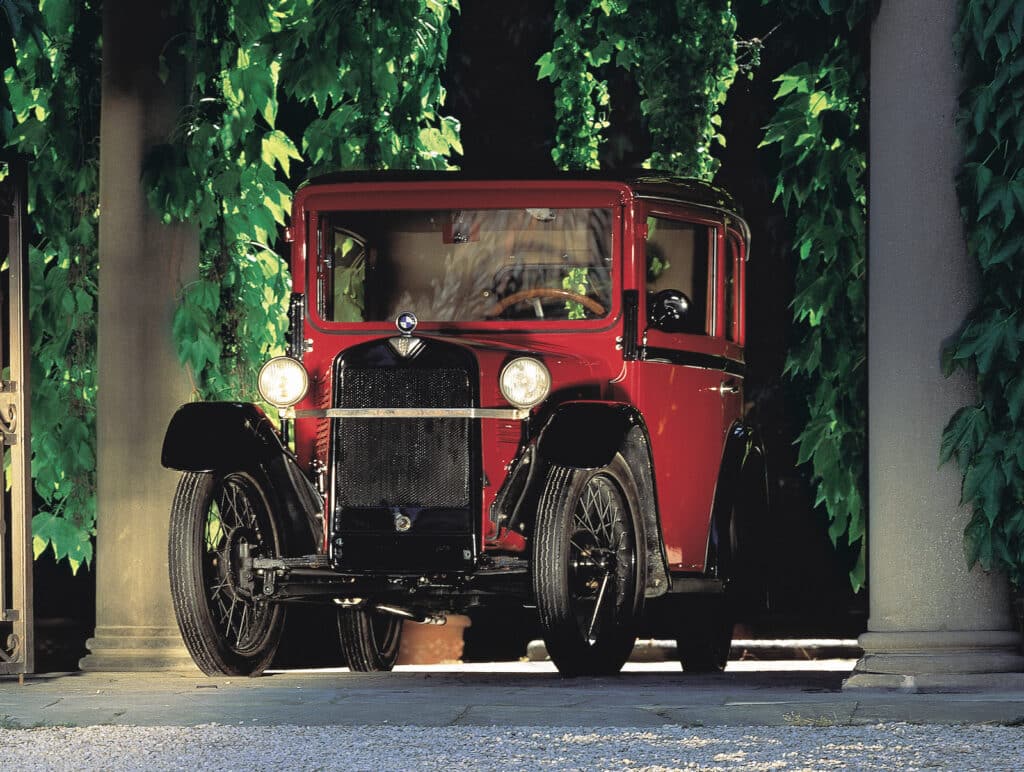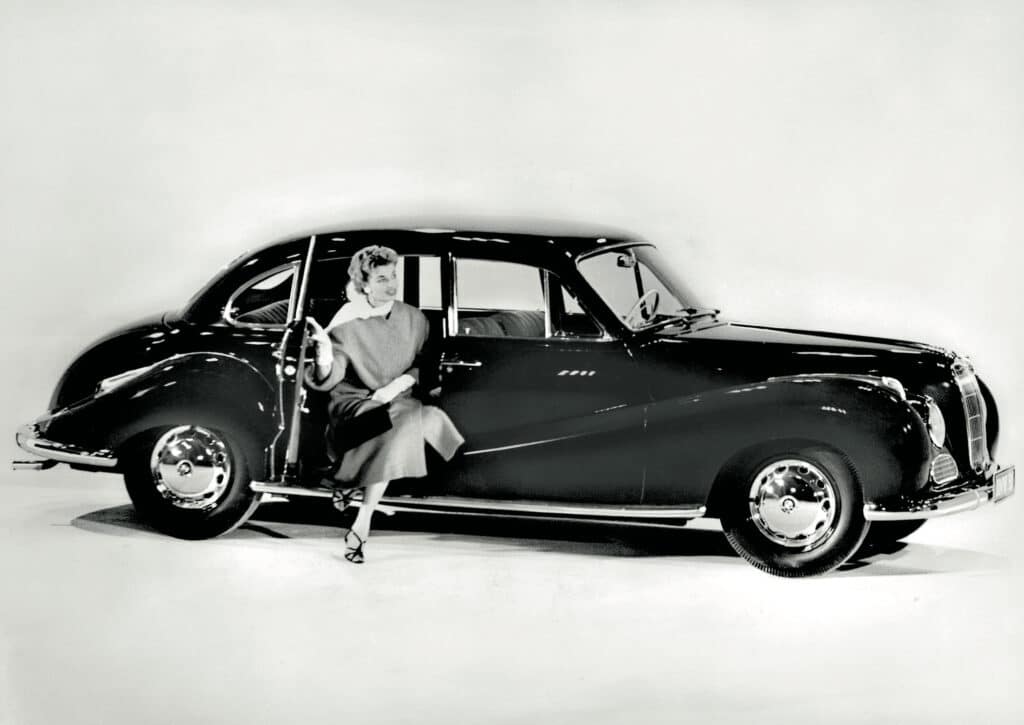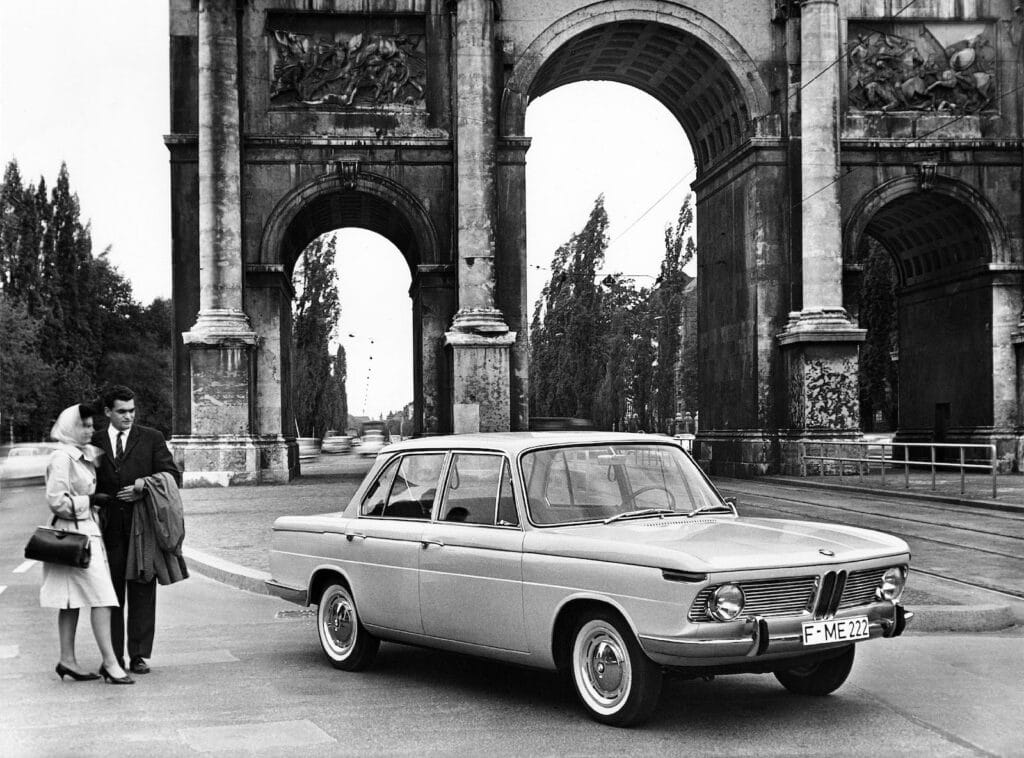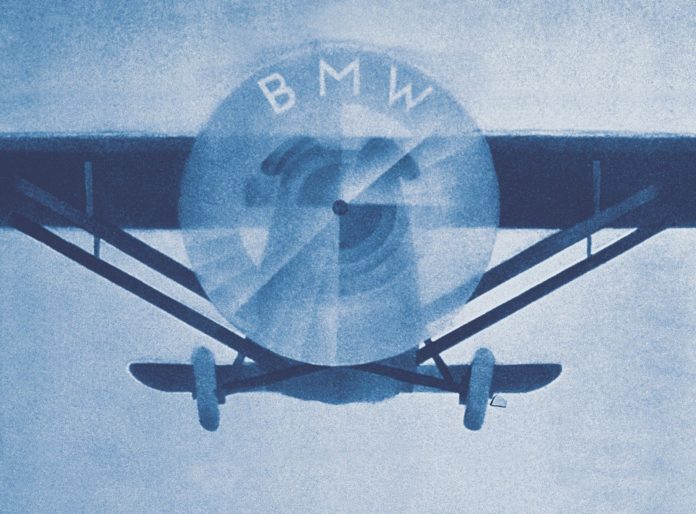There have been a number of car companies, such as Rolls-Royce, that manufactured aircraft engines as well as automobiles. Among those is Bayerische Motoren Werke, or BMW, which was founded this week in 1916 — sort of.
BMW’s beginnings actually stretch back to 1913, when Rapp Motorenwerke GmbH is established in Munich and begins building aircraft engines. Soon thereafter, Rapp begins supplying aircraft engines to aircraft manufacturer Gustav Otto Flugmaschinenfabrik, run by Gustav Otto, son of Nikolaus Otto, who invented the four-stroke internal combustion engine.
But that same year, 1916, Otto enters bankruptcy, his company re-emerging as Bayerische Flugzeugwerke AG, aka Bavarian Airplane Works or BFW. Meanwhile, Rapp’s own operations, now known as Bayerische Motoren Werke GmbH, displays a new emblem that incorporates the Bavarian state flag. In August 1918, BMW goes public, gaining the AG acronym.
Postwar blues

But with the end of the war, Germany is prohibited from producing airplane engines. So, BMW turns to building railway brakes and other engines. But the company is having trouble staying afloat, and is sold, being absorbed into rail brake manufacturer Knorr-Bremse AG in 1920. BMW disappears as a company until 1922, when financier Camillo Castiglioni, the main shareholder of Knorr-Bremse AG, buys the BMW company name along with its employees, production facilities and company logo, and transfers everything to BFW, where its name is changed to Bayerische Motoren Werke AG, or BMW AG.
The following year, BMW’s first motorcycle, the BMW R32, debuts at the 1923 Berlin Motor Show, powered by a twin Boxer engine with cylinders mounted transverse to the direction of motion alongside the driveshaft, which proved easier to service than standard chains or belts. It proves to be a prelude for what comes next.
BMW builds its first cars
In 1928, BMW buys Fahrzeugfabrik Eisenach and in one fell swoop becomes an automaker. BMW initially builds a small car under license from Britain’s Austin Motor Co. Known as the Dixi, the car is rebadged as the BMW 3/15 and is built through 1932, when BMW introduces a car of its own design, the 303. It employed an independent front suspension and a live axle rear along with a 1.2-liter 6-cylinder engine. Not only is the design BMW’s own, it was the first car built using BMW’s twin kidney grille, a styling hallmark used on BMWs since.

But with the rise if National Socialism in Germany, BMW becomes an armaments firm as well, producing aircraft engines through World War II.
With the cessation of hostilities, BMW’s Eisenach factory, now in the Soviet sector, and is taken over by the Soviets, eventually becoming EMW. Elsewhere, other BMW factories are ordered dismantled by the U.S. military government, with intact machines shipped all over the world as reparations.
It wouldn’t be until March 1948 that BMW manages to introduce its first postwar model, the R24 motorcycle. Although little more than an enhanced version of the pre-war R23, supply shortages delay production until December 1948. The company’s first postwar car, the BMW 501, wouldn’t appear until 1951. Powered by the 2.0-liter 6-cylinder engine used in the pre-war BMW 326, the large luxury car flops. Its successors fare little better, including the stunning 507 sportscar, a sexy slab of sheet metal powered by a 3.2-liter V-8 with 150 horsepower.

A near-death experience and rebirth
Built at the request of U.S. importer Max Hoffman, the 507 is slated to sell for $5,000. But high production costs see its price climb to nearly $10,000 at a time when $6,000 bought a very nice Mercedes-Benz 300SL.
It is a car that nearly bankrupts BMW.
Smelling blood, Daimler-Benz threatens to take over the financially troubled company in 1959, but the restructuring plan is rejected by shareholders. Instead, industrialist and BMW shareholder Herbert Quandt expands his stake in the automaker and begins restructuring the company.
In the interim, BMW begins building the Isetta under license, which keeps the company afloat until it can release its own new model, the 1961 1500 New Class. A success, the compact sedan is the beginning of BMW’s rebirth as an automaker, one that remains independent to this day.

